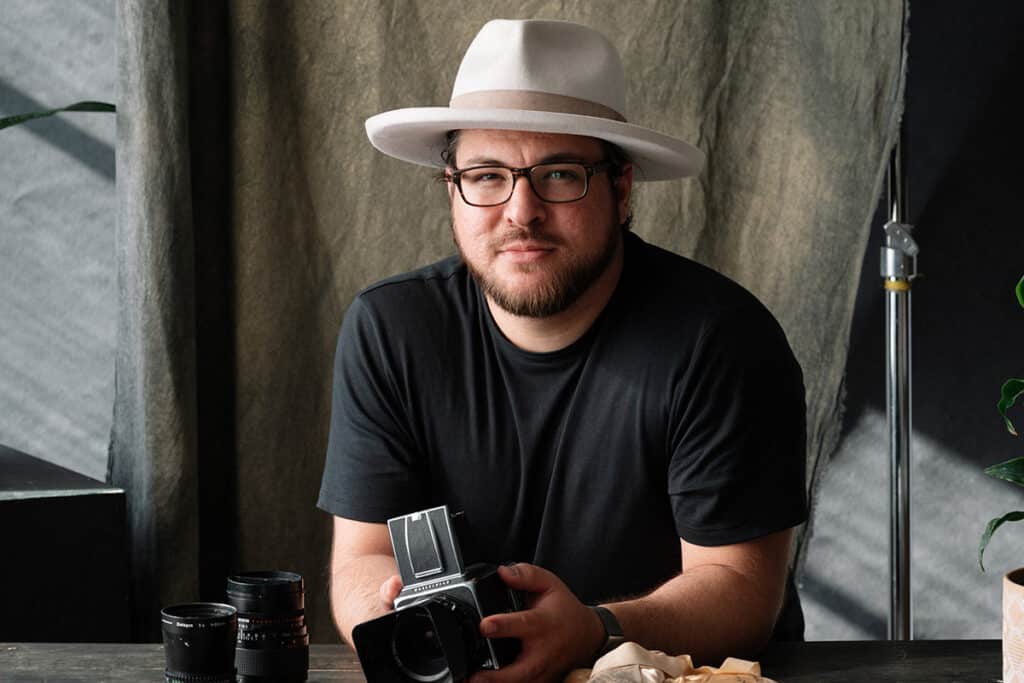Renewal with Respect for the Past
BY JASMINA WELLINGHOFF
PHOTOGRAPHY BY JESSICA GIESEY
Cities across the U.S. are increasingly striving to preserve their historical buildings and cultural heritage and San Antonio is no different. In fact, we are ahead of the game. As part of the preservation effort, many old places are being creatively rehabilitated and either converted to new uses or adapted to meet the demands of contemporary life. The women we talked to for this article are doing their part in saving San Antonio’s urban sites, either as business owners or architects/designers.
 Integrating Past and Present
Integrating Past and Present
Within the burgeoning Pearl complex, itself a shining example of renovation and reuse, sits a relatively modest old house that seems out of place in the newly glitzy environment. Built in 1906, it was once the home of Ernst Mueller, who emigrated from Germany to become the chief cooper at the Pearl Brewery and the father of four children. Today, still looking homey and inviting, the former residence houses the Granary ‘Cue & Brew, one of the best barbecue joints in the city and beyond. The woman responsible for integrating past and present in such a harmonious way is architect Kristin Hefty, who with her husband, Clay Hefty, operates the DADO Group, a firm that offers both design and construction services.
“We loved everything that was going on at the Pearl, and we wanted to see if we could be part of it,” says Hefty, who specializes in redesigning culinary establishments. The couple eventually met with both Silver Ventures officials (developers of the Pearl) and the restaurant owners, brothers Tim and Alex Rattray, “and it went on from there. I was pretty excited when I first saw the house. It had a lot of character,” she adds.
Hefty and I are sharing a light lunch in one of the front rooms of the restaurant, furnished with simple rectangular wood tables and benches. The room on the other side of the entry hall looks pretty much the same, only bigger. It’s easy to imagine a family living here — what with the cooking smells and the intimate atmosphere, you can almost hear a mother calling kids to the table. Hefty looks appreciatively around, obviously happy with her handiwork. She loved “the bones” of the structure from the start, she explains, but it had been vacant for a long time, there were no working utilities, and it was altogether in pretty bad shape.
Her first thought was “How do we adapt this place without losing its character?” Yet it was clear that some rearranging of interior walls was needed. The home’s kitchen was replaced by the bathrooms, and a new restaurant-grade kitchen was installed in an annex built at the back of the house. A covered side porch was also added for outdoor dining, but you would never guess that it was brand-new, so snugly it hugs the house. And diners today look out at the world from the same windows the Muellers used a century ago.
The restoration team stripped off the floor linoleum as well as the remaining oilcloth off the walls to expose the original wood boards and paneling. Damaged planks were replaced by sound ones from other parts of the house. Sanded and polished to a golden glow, all that wood gives the place a cozy vintage feel. “The restaurant owners originally wanted something more modern, while Silver Ventures really cared about the old structure. We had to balance these two requests,” recalls the architect.
Hefty has wanted to be an architect ever since her parents hired one to remodel their residence when she was a child. “To see them draw something and then see that drawing realized in three dimensions was impressive to me,” she notes. While attending the Texas Academy of Mathematics and Science in Denton, she developed an interest in drawing, prompting a teacher to suggest architecture as a career. It proved to be the perfect profession for her. During her studies at UT, the young woman worked as an intern at a large New York firm where she was involved in the design of the Shanghai World Trade Center, the second tallest building in the world. But this sort of thing wasn’t her cup of tea. Following graduation in 2003, she spent several years with Lake Flato before striking out on her own.
Today, the Heftys act as a team, with Kristin handling design while Clay takes care of the construction. Their other rehab/reuse projects include the recently closed Monterey Restaurant in Southtown, a former gas station; the Sweet Leaf Tea offices in Austin and Rosella Coffee here that used to be a plumbing supply warehouse. All have won awards, including two for the Granary in 2013, bestowed respectively by the San Antonio Business Journal and Remodeling Magazine.
DADO is now in demand by culinary establishments looking to marry the old with the new. The company is currently developing a master concept for the renovation/ expansion of the venerable Chris Madrid’s restaurant and for a couple of other projects in the Pearl and at La Cantera Hill Country Resort. Their commitment to sustainable architecture means they tend to use and reuse regional and original materials and minimize the energy needs of each structure.
“So much of the progress in San Antonio is taking place on the culinary scene,” observes Hefty. “Restaurant owners are willing to do new and interesting things with their spaces because so much of the dining experience is about atmosphere. It’s fun to create something new and dynamic while respecting the richness of the past.”
 SHE SAVES NEIGHBORHOOD GATHERING SPOTS
SHE SAVES NEIGHBORHOOD GATHERING SPOTS
When Jody Newman and her new husband, Steve, moved to Southtown in 2003, she knew she had found the right place to live. “We loved it right away,” says Newman, who now operates the beloved Friendly Spot on South Alamo and three other icehouses in town. “We liked the idea of living in an urban neighborhood where we could walk and bike to various places and be part of all the activities.”
The latter included an active art scene, special events like First Fridays and a few popular eateries. But there wasn’t much going on at 943 South Alamo, certainly “nothing that made people come here.” Both Newmans were employed in the insurance industry at the time, but something happened to awaken their interest in neighborhood beer joints. They saw a picture of the original Friendly Spot, an icehouse and music venue that closed in the early 1980s, and heard stories about how much it meant to the surrounding community. It was a place to have a beer and relax, where blue-collar workers mingled with sleek-suited lawyers, and everyone had a good time. That got the Newmans joking about opening something like that when they retired. Yet the idea appealed to them enough to induce them to research the history of icehouses in Texas. They discovered that though these establishments originally sold ice, they eventually morphed into outdoor beer gardens-cum convenience stores where neighbors gathered to drink and socialize.
It was that spirit of informal friendliness that the Newmans wanted to recreate when they leased the nondescript South Alamo property in 2009 after Steve lost his job. “I wanted it to be a place where everyone is welcome,” says Jody, who is known by her staff and customers as the Chief Friend.
The couple tried to preserve the two funky buildings on the property but had to install modern coolers (covered in cedar to fit the surroundings), improve the electrical system and generally bring everything up to code. The large outdoor seating areas feature 1950s-type icehouse chairs in a rainbow of colors, and there is limited indoor seating as well, complete with plain wood tables that remind guests of old taverns. The new restaurateurs also used reclaimed wood to build two rustic bars that look like they might have been around for a long time, though the draft beer dispensing equipment is definitely new and is, in fact, designed and installed by Steve Newman, who now runs a separate company, the Newman Project, installing similar systems for clients. This has left Jody as the sole mistress of the icehouses.
Today, the Friendly Spot sells 250 types of bottled brew and 75 brands of draft beer plus “friendly” munchies for kids and adults. Playground equipment has been installed to keep the urchins busy, while special weekly events such as movies and games appeal to their elders. In a nod to the 21st century, it also offers free Wi-Fi. Jody admits that some of the neighbors are less than happy to have so much night activity nearby, but the Newmans support a number of local initiatives, and many of their customers come from the surrounding area.
“The concept fit so well in Southtown,” observes Jody, who is a big supporter of small, locally owned businesses, which dominate in Southtown. “In some way, I feel like I am encouraging others to rehabilitate old places in the area. It’s a pretty powerful thing to help with the revitalization of the city. When politicians and business leaders mention the Friendly Spot as something that people must see, my jaw drops. It’s nice to have an impact.”
Indeed, and it doesn’t stop there. More recently, Jody took over two other venerable establishments in the area that were about to close or had already closed: the Acapulco Drive Inn, where she subsequently opened a gourmet food truck park called Alamo Street Eat Bar, and a smaller icehouse, B&D Bar, across the street from the Friendly Spot, which was operated by one man, Bruno D’Zdanski, for 50 years. “I just felt I had to keep them alive, and I want to keep as much of their personalities as possible,” she says.
With that same goal in mind, the Newmans eventually reached well beyond their neighborhood last June to buy and restore the iconic Hills and Dales icehouse at Babcock and 1604. Everyone driving along 1604 is bound to notice the incongruously quaint red structure that sits amid all the corporate-looking edifices that have sprung up in the area. Again, it has character and a rich history as a local gathering spot. “Most people would just knock down these buildings, but I see the value of keeping the soul of these businesses alive. These are not strictly business decisions for us. I take risks, but there is an emotional payoff when I see the excitement on people’s faces when they come to a place with history, with a soul. And those smiles would not happen without me,” says Jody.
Before parting, I ask Jody to recommend her favorite beers. She looks down, as if a little embarrassed, before delivering the unexpected reply: “I don’t drink beer.”
 PLAZA DE ARMAS REBORN
PLAZA DE ARMAS REBORN
A beautiful example of rehab/reuse is the Plaza de Armas building in the historic heart of downtown. Recently re-imagined and transformed by two women, Allison Chambers and Rachel Wright, both architects in the historic preservation department of Ford, Powell & Carson, the reborn landmark is an airy, serene, light-filled place where you want to linger. Built in 1880 for Steves Lumber Company, the 58,000-square-foot structure — that actually consists of several interconnected buildings — was most recently used by the city as office space for the human resources department. In between, all sorts of businesses, including a saloon and a hardware store, used the premises, located next door to the Spanish Governor’s Palace. When the two architects came to see it for the first time, it wasn’t a pretty sight.
“The employees had already left in 2011. It was basically a jumbled furniture wasteland,” says Chambers, who acted as project manager. “You couldn’t even get a feel for the space because it was all subdivided into cubicles.” She says this as we are sitting in the restored central hall named The Culture Commons, a spacious open area that can be used for exhibits or rented to arts and culture organizations for various gatherings. The gleaming wood floor consists entirely of salvaged original wood planks, and the original cast iron columns reach to the ceiling, where newly exposed wood joists function as an architectural feature in their own right. Ceiling lights are turned up to illuminate them.
Since the building is a Recorded Texas Historic Landmark, the architects had to follow strict standards, which obligated them to restore the edifice’s facade without changing its appearance. Inside, they had freer rein but still had to work within the federal guidelines for historic preservation and be sensitive to the architectural history of the place. Wright says she and Chambers became “the building whisperers” and listened to the building itself to “tell us where it hurts.” The old stones apparently did. The two partners eventually decided to highlight the materials used and the construction technology of the late 19th century. Hence the exposed joists and masonry walls, formerly hidden by Sheetrock put in place by a previous occupant. And like Hefty, they also made every effort to reuse original materials, sometimes moving them from one place in the building to another. Not an easy task but important for keeping the character of the space.
Today, in addition to the Commons and an adjacent narrow gallery, the Plaza de Armas houses two TV studios for public and governmental access channels and, upstairs, the comfortable offices of two city departments: culture and creative development, and government and public affairs. To get enough height to accommodate TV lights, the downstairs floor was dropped four feet into the ground in the studio section of the building. The studios themselves are state of the art, protected from street noises and vibrations by steel rods within the masonry walls. Not surprisingly, the excavation uncovered an even older layer of history, as all sorts of objects from the time of the Spanish rule were found buried in the ground. They are now housed at UTSA’s Center for Archeological Research.
Both Wright and Chambers love the adaptive reuse projects and have worked on other restorations/adaptations, such as the South Texas Heritage Center at the Witte, the Huebner-Onion Homestead in Leon Valley, the Texas Governor’s Mansion, the Missions and more. For Wright, there’s an emotional connection with a number of these places. As a native San Antonian, she remembers being taken on school trips to historical landmarks, including the Spanish Missions. “Working on them today as a professional is a whole different experience,” she says. Oddly, the very first lecture she attended as a new graduate student at Columbia University was about the San Antonio Missions. “It was surreal,” notes the architect, who was promoted to principal this past December.
Also in December, Centro San Antonio presented the pair with one of its 2015 Downtown’s Best Awards for Best Adaptive Reuse. For Wright and Chambers, seeing the formerly dilapidated building come to life again is the best reward. “It’s really exciting to see people enjoy our space,” observes Wright. “The occupants want to show off the history and heritage of the complex. They want people to know that this is a special place. It makes us feel extremely proud.”




